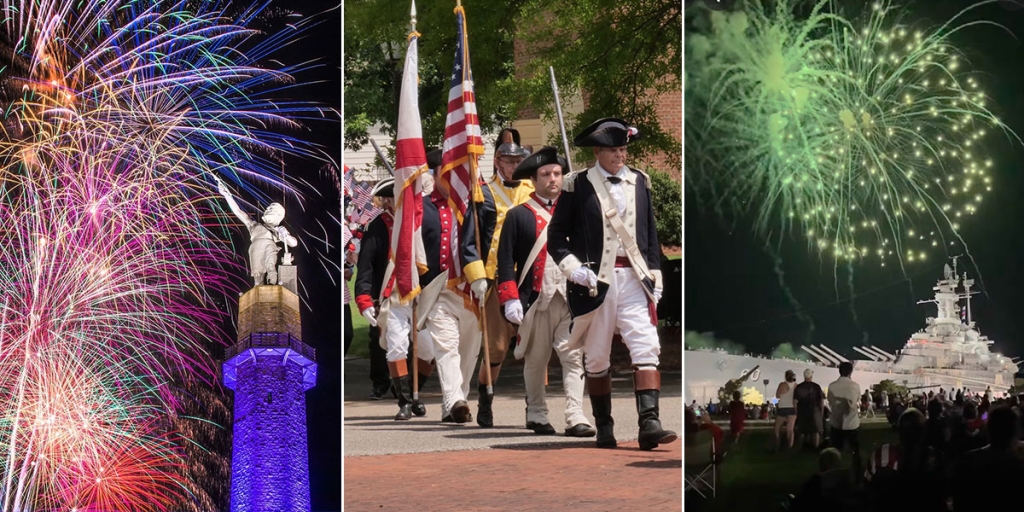“This was a massive system,” James Lowery declared. “It provided an efficient, accessible, reliable means of linking the mines and quarries around Birmingham to the furnaces and the furnaces to the factories.”
Lowery was speaking of the Birmingham Mineral Railroad (BMRR), by far the largest of the internal network of rail lines that transported the raw materials – iron ore, coal, and limestone, as well as coke, the coal by-product that was critical to the steelmaking process – that fueled Birmingham’s early emergence as a manufacturing center. Built and operated by the Louisville & Nashville (L&N) Railroad, the line known locally as the Birmingham Mineral grew to be a network of mainlines, sidings and spurs that covered more than 300 rail miles in seven central Alabama counties: Jefferson, Shelby, Bibb, Tuscaloosa, Blount, Etowah and a corner of Walker.
“Really, it was Birmingham’s first economic development,” said Lowery. “You don’t build a major industrial center on wooden wagon traffic. There was a need for an efficient way to move materials from the mines and quarries to the blast furnaces that turned those ingredients into pig iron and other products. Without the Mineral Railroad, Birmingham could not have thrived the way it did.”
Increasing public awareness of the critical role the BMRR played in the development of Birmingham and the surrounding region is something of a mission for Lowery. He is the volunteer coordinator and driving force behind the BMRR Signs Project, an initiative of the Leeds-based Mid-South Chapter of the Railway & Locomotive Historical Society. An ongoing project that began in 2015, the program to date has placed a total of 175 signs at locations along the former route of the railroad.
James Lowery talks about the Birmingham Mineral Railroad Signs Project from Alabama NewsCenter on Vimeo.
“A lot of people don’t know the significance of the BMRR, or that they can still see parts of it,” Lowery said. “People drive, walk, and bicycle every day in areas where the BMRR ran without ever being aware of it. The purpose of the sign project is to increase the public’s knowledge of a very important part of Birmingham’s history.”
The first tracks for the BMRR were laid in 1884, in what is now Red Mountain Park. That was the South Branch, with the North Branch completed in 1887 (the directional designations referred to the orientation of the branches relative to Red Mountain). From its junction with the South and North Alabama Railroad near what became the city of Homewood, the South Branch ran southwest to Bessemer. There, it met the North Branch, which ran from near Grace’s Gap, near present-day Spaulding-Ishkooda Road, through what is now the southwestern area of Birmingham and the city of Lipscomb.
Additional branches were added over the years, and when the final additions to the BMRR were completed in 1912, the railroad’s 31 major branches accounted for 253 miles of mainline track – a total equal to the distance from Birmingham to Mobile. The L&N invested a total of more than $6 million – about $170 million in current dollars – in building out and maintaining the Birmingham Mineral.
In addition to hauling materials and products to keep Birmingham’s industrial capacity at peak output, the BMRR transported local mail and provided “express” parcel delivery long before the days of FedEx and UPS. It also ran a passenger service and contributed further to the area’s economy by transporting fruits and vegetables, livestock, lumber, manufactured products and other locally produced commodities to market. A report issued by the Railroad Commission of Alabama in 1891 listed among the products transported by the BMRR: “… iron and steel rails and nails … cement, brick, and lime … agricultural implements … fertilizers … household goods and furniture … wines, liquors, and beers.”
“It was a huge moneymaker for the L&N,” Lowery said. “But it also provided a lot of services to local communities that people couldn’t get anywhere else.”
Though the gradual dismantling of the BMRR began during the 1930s, portions of it operated until 1988. The L&N, long a leading Southern-based railroad, ultimately became part of the CSX Transportation system. As decades passed and Birmingham’s economy shifted away from iron and steel, public awareness of the Birmingham Mineral waned.
On a recent summer morning, Lowery stood near the main entrance of Birmingham’s Vulcan Trail. This is the spot where the Red Gap Branch of the BMRR, completed in 1890, crossed to the northern slope of Red Mountain to serve the Valley View and Lone Pine mines before re-crossing to the southern slope over what is now Green Springs Highway in Homewood.
The Vulcan Trail follows a portion of the actual roadbed of the BMRR’s Red Gap Branch. The branch started in Irondale, where it connected to the Gate City Branch and the Gate City Extension to Trussville. It served the mines at Ruffner Mountain, Irondale, the Eastwood area of Birmingham, and, roughly parallel to present-day Montclair Road, to what became the English Village area of Mountain Brook.
At its western end, in what is now west Homewood, the Red Gap Branch connected to the South and North Alabama Railroad. After running less than a mile on that common track, the BMRR switched to the South Branch, which ran to Bessemer (and, via another branch, a few miles farther southwest). The total distance for all those branches, from northeast of Trussville to southwest of Bessemer, was more than 40 miles, serving 89 named mines – “a mine every quarter-to-half-mile,” Lowery pointed out.
On this day, assorted walkers and joggers plied the trail in both directions. A group of about 15 school-aged children, accompanied by three adult chaperones, made their way along the railroad’s former path in pairs and clusters. For Lowery, that’s ample evidence that the BMRR Signs Project is worthwhile.
“Birmingham has a rich history, and the Mineral Railroad was a big part of it,” he said. “Awareness of that is important to the entire community, because it cut across all socio-economic areas in Jefferson County. Our signs are in every city council and county commission district, which shows how many people it touched.
“The BMRR contributed a lot to what Birmingham is today, so we’re pleased to be able to help make sure everyone is aware of that.”
For more information on the Birmingham Mineral Railroad, including sign locations, visit Bham-MMR.com or follow the project on Facebook.
(Courtesy of Alabama NewsCenter)











